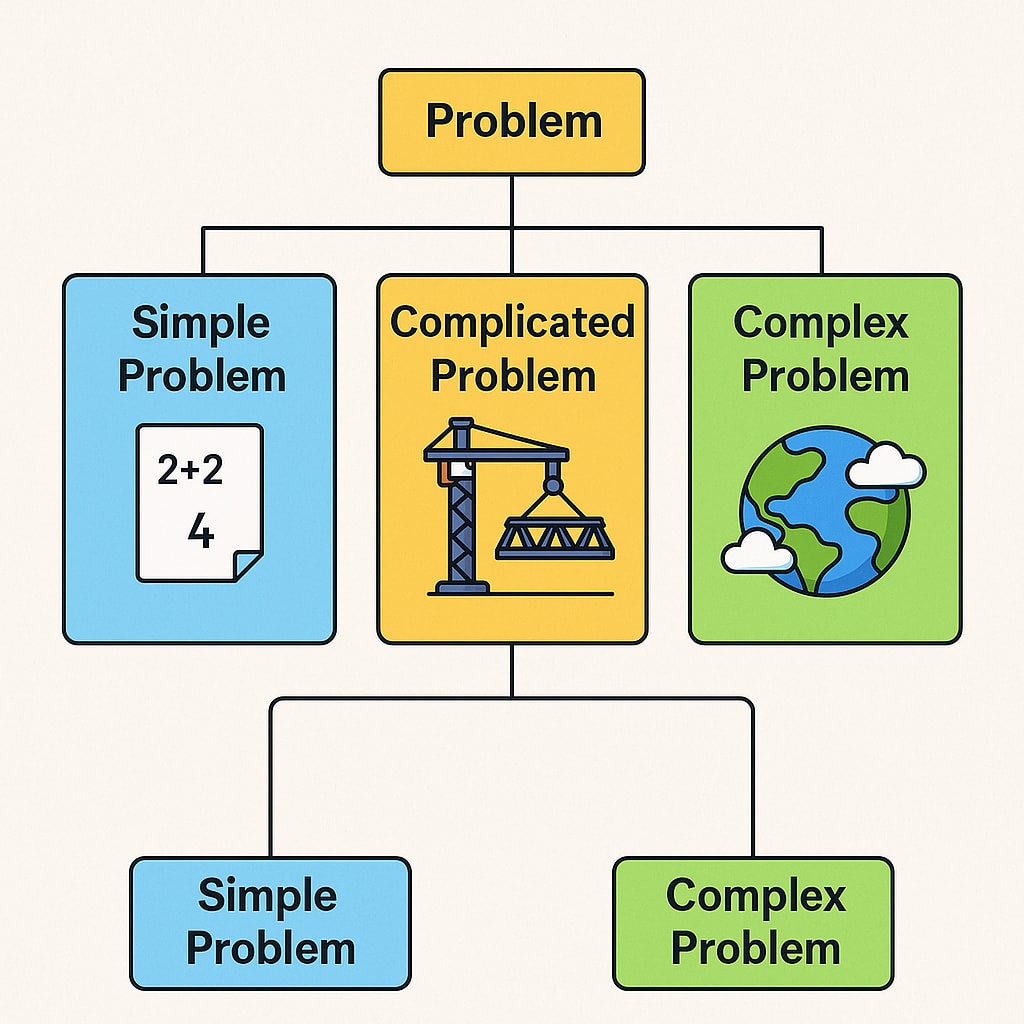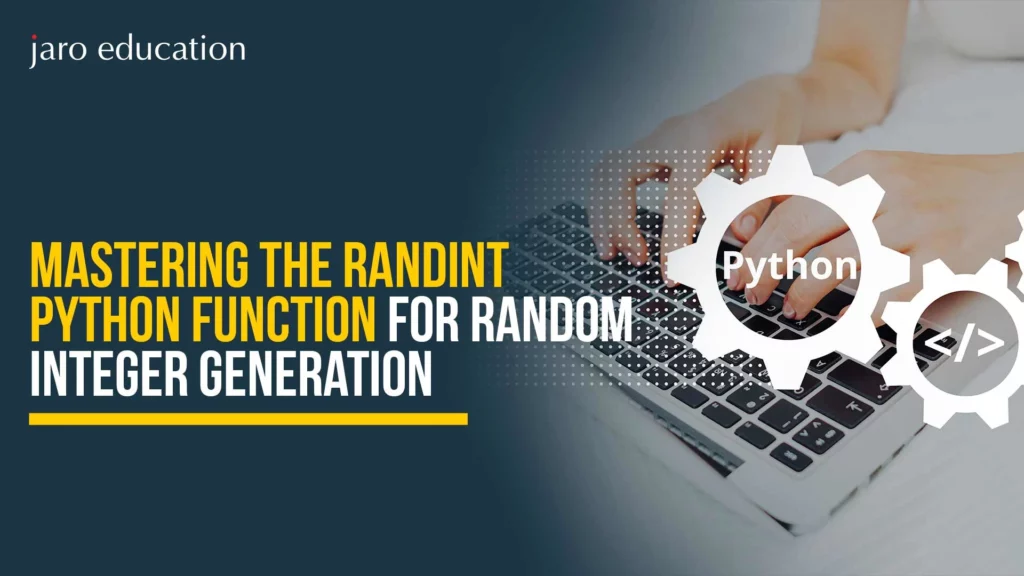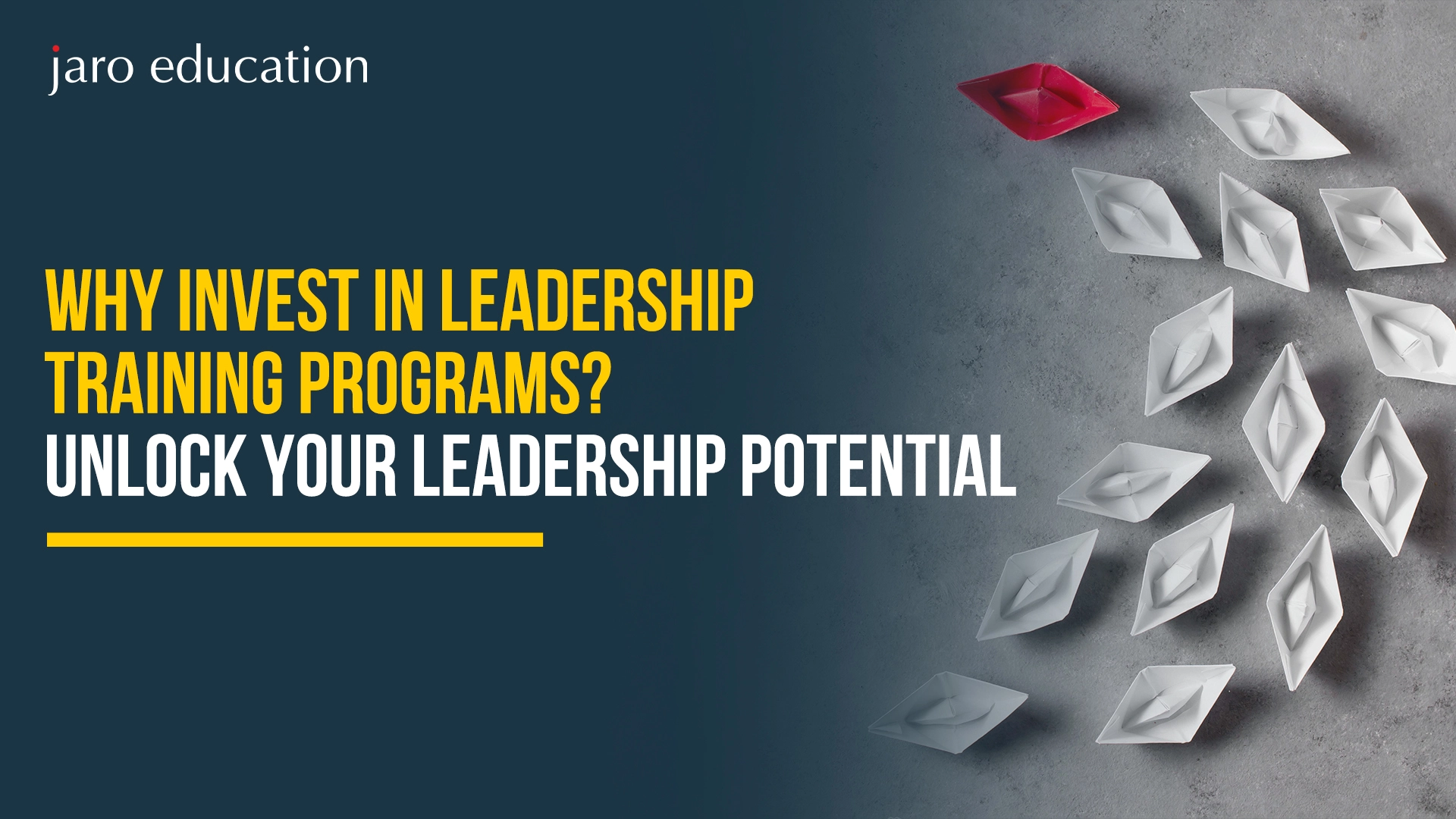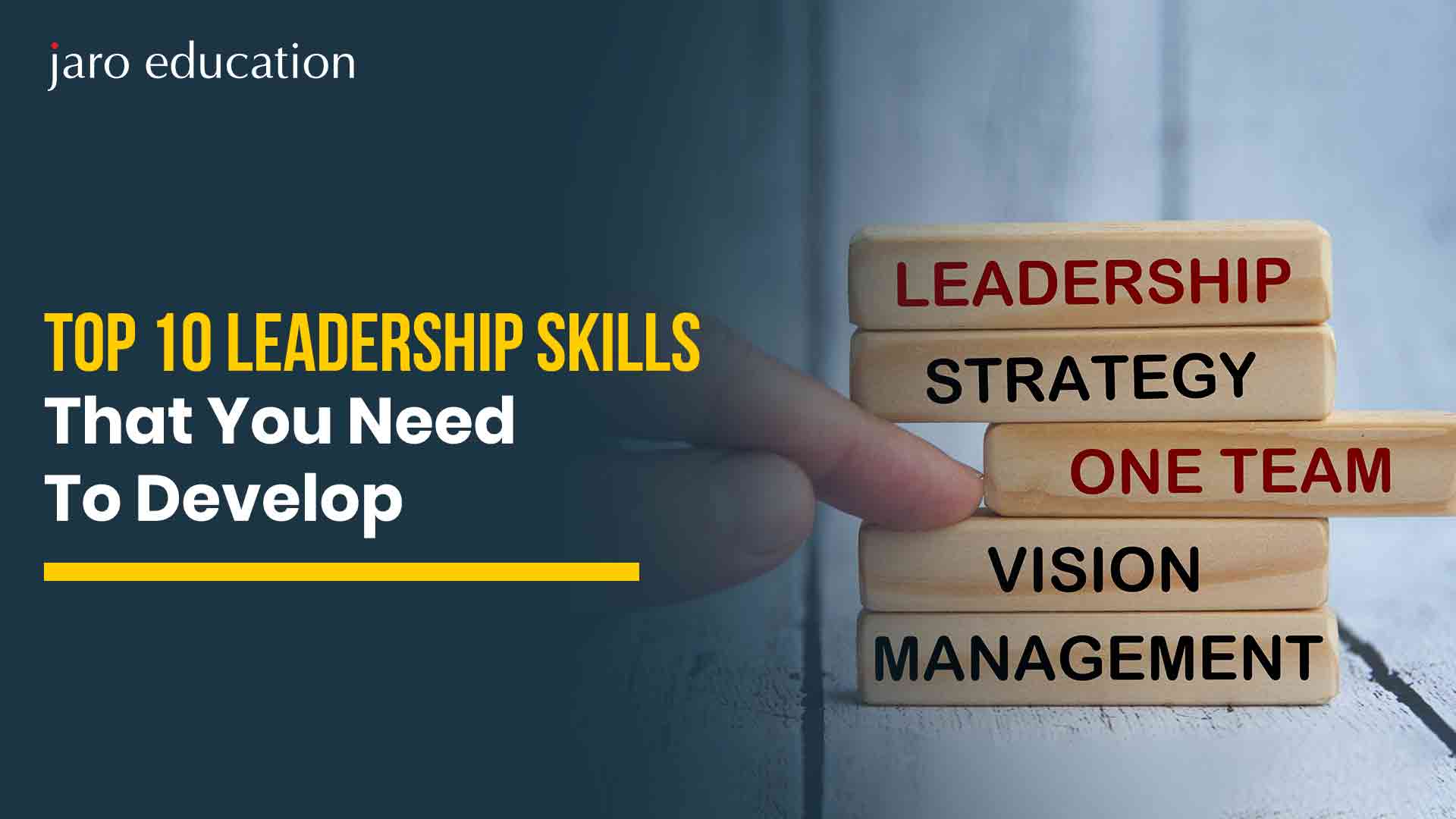Problem-Solving Skills With Powerful Examples You Need to Know
Table of Contents

- jaro Education
- 2, August 2024
- 4:30 pm
Have you ever been in a situation where you’re stuck in a problem without any idea of how to get out? It’s common for all of us. From solving complicated business problems to everyday challenges, the one skill to move forward is problem-solving.
The difference between those who achieve success and those who fail often comes down to how effectively they solve problems. Don’t worry – you don’t have to be a genius or a CEO to be great at problem-solving skills. You can learn them and master them, too.
In this blog, we will explain problem-solving skills, their importance to every aspect of life, and using real-life examples, we will guide you through the process of truly understanding them. Do you want to take confusion into clarity and challenges into a win? Continue reading.
What are Problem-Solving Skills?
Definition of Problem-Solving Skills
Problem-solving skills refer to the ability to identify problems, analyze them, and formulate effective solutions. It involves a systematic approach to addressing challenges, whether they are complex issues in the workplace or everyday problems in personal life. These skills encompass critical thinking, creativity, analytical reasoning, and decision-making capabilities.
Problem-solving skills examples play a pivotal role in diverse areas of life, influencing personal growth, professional success, and societal progress. In personal life, these problem-solving skills empower individuals to overcome obstacles, make informed decisions, and manage everyday challenges efficiently. In professional settings, problem-solving abilities are essential for innovation, conflict resolution, and achieving organizational goals. Moreover, in societal contexts, effective problem-solving skills contribute to addressing complex issues such as environmental sustainability, public health crises, and economic challenges.
What Problem-Solving Skills Should I Have?
Problem-solving skills are essential for navigating challenges and achieving success in various aspects of life. Here are practical tips to enhance your problem-solving abilities and adapt to changing circumstances:
Steps for Effective Problem-Solving Skills
- Define the Problem Clearly
- Gather Information and Analyze
- Brainstorm and Generate Ideas
- Evaluate Options and Make Decisions
- Implement and Adapt
- Reflect and Learn
Begin by clearly defining the problem and its scope. Break down complex issues into smaller, manageable components.
Collect relevant data and information from credible sources. Use analytical tools and methods to identify patterns and root causes.
Engage in brainstorming sessions to generate diverse solutions. Encourage creativity and explore unconventional approaches.
Assess each solution based on feasibility, effectiveness, and potential outcomes. Use decision-making frameworks like SWOT analysis or cost-benefit analysis to weigh pros and cons.
Implement the chosen solution while monitoring its progress. Be flexible and ready to adapt strategies based on feedback and new information.
Review the outcomes of your decisions and problem-solving process. Identify lessons learned and areas for improvement in future challenges.
8 Ways to Build Problem-Solving Skills
Use these ten fun ways to build your problem-solving skills, learn to be more strategic, and teach your brain to do more.
- Dance It Up
Dance is thought to stimulate neural processing, possibly even resulting in the formation of new neural pathways to bypass the dopamine-deficient roadblocks in the brain.
So, if you dance ballet or any other more structured type of dance, you may stimulate convergent thinking to help you find one relevant answer to a problem. And if you need help from divergent thinking (finding a number of possible answers to a problem), you may wish to consider dancing a less structured style (hip hop, tap, etc.).
- Exercise Your Brain with Logic Puzzles or Games
The best way to win at chess, sudoku, a Rubik’s cube, etc., is not to think the problem forward from one step to the next, but rather backwards from a known solution back to the starting point. The same principle resolves many real-life strategic-thinking scenarios.
You can exercise your brain and then formulate new problem-solving strategies by practicing some logical puzzles and other games.
- Sleep Well
When it comes to states of sleep or wake, the state of sleep called Rapid Eye Movement (REM) sleep has an exponentially greater impact on creative processing in the brain than the others. REM sleep “has a unique capacity to stimulate associative networks, enabling the brain to form new and useful associations between unrelated ideas” that are “not caused by selective memory enhancements” like memory consolidation that happens when we are awake.
- Work It (To Music)
A study of patients in cardiac rehabilitation tested verbal fluency after exercising with and without music. Participants’ verbal fluency scores more than doubled when they worked out with music. According to the lead author of the study, “The combination of music or sounds and exercise can increase cognitive arousal and stimulate cognitive organization”
- Carry an “Idea Journal” in Your Bag
Problem-solving with a journal. You’ll be able to easily document valuable thoughts, record personal experiences, make sketches, and consider any troubling issues when you have an Idea Journal with you at all times. Ideally, try to sort your problems by getting your thoughts down on paper, and then you are able to observe them more objectively. Returning to thinking about it implies having all your thoughts stuck in your head (which will ultimately result in better problem-solving strategies).
- Practice What You Learn
The process of assessing and using body awareness, breathing, and meditation has been shown to improve cognitive test scores significantly. Other findings from the University of Illinois study showed that participants can accomplish with shorter reaction time, more accuracy, and larger attention capacity.
- Have Some Cheerios (And Then Reflect)
Physicists have called the phenomenon where cherries always stick together when they are at the bottom of a bowl. In this case, the mechanism is surface tension.
The lesson is this: when you are feeling tension in connection with solving a problem, cling to other people. Draw on other people’s experiences and ideas. This might mean connecting people from entirely different career paths. Make connections, collaborate. Collaborate and finish the job.
- Use Mind Maps to Help Visualize the Problem
A Mind Map is a visual representation of a problem and its possible solutions. Mind Maps can help you focus your mind, exercise your brain, drive your creative thinking, and produce more ideas for solutions.
Make a Mind Map by drawing your problem as the central idea. Add “main branches” for all of the possible reasons for the problem. Add “sub-branches” to provide additional details.
Then, make a separate Mind Map of solutions for your central problem. Add “main branches” for each of the ways that you can solve your problem, such as a colleague who can help, a technique you can utilize, and resources you can use. Add “sub-branches” for other details. Include a final branch for the most useful solution for your main problem. Add “sub-branches” for details.
Types of Problems and How to Solve Them
Understanding the different types of problem-solving is crucial for effective problem-solving, as it allows individuals to tailor their approach and apply the most suitable strategies for each unique situation.
Classification Based on Complexity
Problem classification based on complexity helps in understanding the varying degrees of difficulty and the approaches required for effective problem-solving.

- Simple Problem
Simple problems are straightforward issues that have clear solutions and require minimal analysis or expertise to resolve.
Examples:
- Solving basic arithmetic calculations.
- Fixing a leaking faucet.
- Following a recipe to cook a simple meal.
- Complicated Problems
Complicated problems are more intricate and typically involve multiple steps or components. They require specialized knowledge or skills to address.
Examples:
- Designing and building a bridge.
- Developing a software application with complex functionalities.
- Planning and executing a large-scale event with multiple logistics.
- Complex Problems
Complex problems are dynamic and multifaceted challenges that do not have straightforward solutions. They involve numerous interconnected factors and often evolve.
Examples:
- Addressing climate change and its global impacts.
- Managing a multinational corporation through economic uncertainty.
- Resolving systemic issues in healthcare delivery or education reform.
- Illustrative Examples
- Simple Problem Example: Repairing a flat bicycle tire involves identifying the puncture, removing the inner tube, patching or replacing it, and reassembling the tire. The steps are clear, and the solution is straightforward with few variables to consider.
- Complicated Problem Example: Developing a new smartphone involves integrating hardware components, designing software functionalities, conducting usability testing, and ensuring compatibility across various networks and platforms. Each step requires specialized knowledge and collaboration among different teams.
- Complex Problem Example: Addressing urban congestion requires considering urban planning, public transportation infrastructure, environmental impact assessments, public policy, and community engagement. Solutions involve diverse stakeholders, long-term planning, and adaptive strategies to achieve sustainable outcomes.
Understanding these classifications and problem-solving examples helps individuals and organizations adopt appropriate problem-solving strategies based on the complexity of the issues they face. Effective problem-solving entails applying the right tools and approaches to navigate challenges and achieve desired outcomes efficiently.
Methods and Strategies for Problem-Solving
Effective problem-solving encompasses various methods and strategies tailored to different types of problem-solving and contexts. Here are the key approaches widely used:
- Analytical Problem-Solving Approach
Definition: The analytical approach involves systematically breaking down a problem into smaller, manageable parts to understand its components and interrelationships.
Process:
- Identify the Problem: Clearly define the issue or challenge.
- Gather Information: Collect relevant data and insights related to the problem.
- Analyze Information: Use logical reasoning and critical thinking to examine causes, factors, and potential solutions.
- Develop Solutions: Based on analysis, generate practical and actionable solutions.
- Implement and Evaluate: Execute the chosen solution and assess its effectiveness.
- Benefits: Provides a structured framework for problem-solving, ensuring thorough analysis and informed decision-making.
- Creative Problem-Solving Techniques
Definition: Creative problem-solving involves thinking innovatively and exploring unconventional approaches to generate new ideas and solutions.
Techniques:
- Brainstorming: Encourages a free-flowing generation of ideas without criticism.
- Mind Mapping: Visualizes relationships between ideas and concepts to explore connections and organize thoughts.
- Role-playing and Simulation: Role-playing different scenarios to test potential solutions and anticipate outcomes.
- Benefits: Stimulates creativity, fosters innovation, and expands the range of possible solutions beyond traditional methods.
- Decision-Making Frameworks
Definition: Decision-making frameworks provide structured approaches to evaluate alternatives, assess risks, and make informed choices.
Popular Frameworks:
- SWOT Analysis (Strengths, Weaknesses, Opportunities, Threats): Evaluates internal strengths and weaknesses, along with external opportunities and threats, to formulate strategic decisions.
- Cost-Benefit Analysis: Compares the costs of implementing a solution with its expected benefits to determine its feasibility and potential return on investment.
- Pareto Analysis (80/20 Rule): Prioritizes solutions by focusing on the most significant factors contributing to the problem.
- Benefits: Facilitates systematic evaluation of options, minimizes biases, and enhances decision quality by considering relevant factors and outcomes.
- Integrating Methods for Effective Problem-Solving
Effective problem-solving often combines analytical rigor with creative thinking and structured decision-making frameworks. By integrating these methods, individuals and teams can approach problems comprehensively, explore innovative solutions, and make well-informed decisions. Adaptability and flexibility in applying these strategies enable problem-solvers to navigate challenges effectively across various personal, professional, and societal contexts.
Examples of Effective Leadership Through Problem-Solving

*Trevor Ambrose
Scenario: Apple faced declining market share and product innovation challenges in the late 1990s.
Leadership Approach: Steve Jobs returned as CEO and initiated a series of strategic decisions, including simplifying product lines, enhancing design aesthetics, and introducing innovative products like the iPod and iPhone. His visionary problem-solving skills revitalized Apple’s brand and positioned it as a leader in technology and consumer electronics
Indra Nooyi at PepsiCo:

*Financial Times
- Scenario: PepsiCo encountered consumer health concerns regarding sugary beverages and sustainability challenges.
- Leadership Approach: As CEO, Indra Nooyi implemented a dual strategy of product diversification and sustainability initiatives. She led the development of healthier snack options, expanded into new markets, and prioritized environmental sustainability in operations. Her strategic problem-solving skills contributed to PepsiCo’s long-term growth and social responsibility initiatives.
Importance of Critical Thinking and Creativity in Problem-Solving
Critical Thinking:
Definition: Critical thinking involves analyzing information objectively, evaluating arguments, and making reasoned judgments.
Importance: It enables individuals to question assumptions, consider multiple perspectives, and approach problems with logic and clarity. Critical thinking enhances problem-solving by fostering deeper understanding, effective decision-making, and logical reasoning.
Creativity:
Definition: Creativity involves generating innovative ideas, thinking outside the box, and approaching problems from unconventional angles.
Importance: Creativity injects fresh perspectives into problem-solving processes, leading to original solutions and breakthroughs. It encourages experimentation, adaptability, and the exploration of new possibilities, which are essential for tackling complex or ambiguous problems.
Incorporating critical thinking and creativity into problem-solving processes enhances adaptability and resilience, equipping individuals and teams to navigate challenges effectively and capitalize on opportunities for growth and innovation. These elements form integral parts of a holistic approach to problem-solving, promoting continuous improvement and sustainable solutions in diverse contexts.
Problem-Solving Skills Examples in Different Contexts
Exploring problem-solving skills across various contexts reveals how versatile and essential these abilities are in navigating both personal and professional challenges.
Personal Life:
In personal life, effective problem-solving skills examples help navigate everyday challenges and improve overall well-being.
Resolving Conflicts in Relationships:
Scenario: A couple faces recurring disagreements over financial decisions.
Approach: They engage in open communication, actively listen to each other’s perspectives, and seek mutually acceptable solutions such as creating a joint budget or seeking financial counseling.
Budgeting and Financial Management:
Scenario: A family struggles with managing expenses within their monthly income.
Approach: They analyze their spending habits, prioritize essential expenses, set financial goals, and implement a budgeting plan to track income and expenditures effectively.
Workplace:
In the workplace, strong problem-solving abilities drive productivity, innovation, and successful project outcomes.
Case Studies of Problem-Solving Skills Examples in Various Professions
- Engineering: Engineers working on a construction project encounter unexpected soil stability issues. They conduct thorough soil analysis, collaborate with geotechnical experts, and redesign foundation plans to ensure structural integrity.
- Healthcare: Medical professionals in a hospital face challenges with patient wait times in the emergency department. They implement lean management principles, redesign patient flow processes, and allocate resources efficiently to reduce wait times and improve patient care.
- Business: A multinational corporation experiences a declining market share in a competitive industry. Business problems are complex and often involve Business Analysis. Business leaders conduct market research, analyze consumer trends, and develop a strategic marketing campaign to reposition the brand and regain market share.
Team Problem-Solving Exercises and Their Outcomes:
Scenario: A cross-functional team in a tech startup encounters a software bug affecting product performance.
Approach: The team conducts a root cause analysis, explores debugging techniques through collaborative brainstorming sessions, and implements incremental fixes based on agile development principles to resolve the issue swiftly.
Importance of Problem-Solving Skills in Leadership
Problem-solving skills are critical for effective leadership, as they enable leaders to navigate challenges, make informed decisions, and drive organizational success. Here’s how leaders leverage problem-solving:
How Do Leaders Use Problem-Solving to Drive Organizational Success?
Navigating Complexity:
Definition: Leaders often face complex and multifaceted challenges in their roles, such as market fluctuations, technological disruptions, or organizational crises.
“Approach: Effective leaders employ analytical problem-solving skills to break down complex issues into manageable components. They gather relevant data, analyze trends, and anticipate potential outcomes to formulate strategic responses.
Decision-Making:
Definition: Decision-making is a core aspect of leadership, where leaders must choose between alternative courses of action to achieve organizational goals.
Approach: Leaders use problem-solving skills like SWOT analysis, cost-benefit analysis, or scenario planning to evaluate options systematically. They consider risks, opportunities, and long-term implications to make informed and decisive choices.
Driving Innovation:
Definition: Innovation is essential for organizational growth and competitiveness. Leaders foster a culture of innovation by encouraging creative problem-solving and embracing new ideas.
Approach: Leaders empower teams to explore innovative solutions to existing challenges. They promote experimentation, reward initiative, and provide resources for research and development to drive continuous improvement.
Conflict Resolution:
Definition: Conflict can arise within teams, between departments, or with external stakeholders. Effective leaders mitigate conflicts promptly to maintain productivity and cohesion.
Approach: Leaders employ problem-solving skills examples to facilitate constructive dialogue, mediate disputes, and negotiate win-win solutions. They promote understanding, address underlying concerns, and foster collaboration among conflicting parties.
Challenges in Problem-Solving
The importance of problem-solving skills examples is high for personal and professional success, but several challenges can hinder the process. Understanding these obstacles and employing strategies to overcome them is essential for achieving desired outcomes.
Common Obstacles to Effective Problem-Solving
Lack of Clarity:
Challenge: Unclear problem definition or ambiguity in understanding the root cause can impede progress.
Impact: Misdirected efforts and ineffective solutions.
Strategy: Take time to clearly define the problem, gather relevant data, and verify assumptions before proceeding. Use techniques like brainstorming or mind mapping to explore different perspectives.
Limited Information:
Challenge: Insufficient data or incomplete information can hinder accurate problem analysis and decision-making.
Impact: Inability to assess the situation comprehensively and make informed choices.
Strategy: Gather additional information through research, data collection, and consultation with subject matter experts. Use analytical tools and frameworks to fill knowledge gaps and validate assumptions.
Emotional Bias:
Challenge: Emotional reactions, personal biases, or preconceived notions can cloud judgment and affect problem-solving objectivity.
Impact: Biased decision-making and overlooking alternative solutions.
Strategy: Maintain emotional intelligence and self-awareness. Encourage diverse perspectives and constructive feedback from team members. Use decision-making frameworks like SWOT analysis to assess options objectively.
Complexity and Overwhelm:
Challenge: Highly complex problems with multiple variables or interconnected issues can overwhelm problem-solvers.
Impact: Difficulty in prioritizing tasks and developing effective strategies.
Strategy: Break down the problem into smaller, manageable tasks or components. Prioritize actions based on urgency and importance. Use tools like project management techniques or agile methodologies to manage complexity incrementally.
Resistance to Change:
Challenge: Resistance from stakeholders or organizational inertia can hinder the implementation of innovative solutions.
Impact: Delayed progress and missed opportunities for improvement.
Strategy: Foster a culture of openness to change and innovation. Communicate the benefits of proposed solutions and address concerns proactively. Involve key stakeholders early in the problem-solving process to gain buy-in and support.
Difference Between Reactive and Proactive Problem-Solving
Reactive Problem-Solving: The reactive problem-solving involves responding to issues as they arise, often in a spontaneous or unplanned manner. It focuses on addressing immediate problems and finding solutions in real-time without extensive preparation or foresight. While reactive problem-solving is necessary for handling urgent situations, it may not always prevent recurring problems or address underlying causes.
Proactive Problem-Solving: The proactive problem-solving, on the other hand, emphasizes prevention and strategic planning. It involves anticipating potential challenges, identifying risks, and taking preemptive measures to mitigate them before they escalate. Proactive problem-solving aims to create long-term solutions and improve overall efficiency by addressing root causes and implementing preventive strategies.
Understanding the distinction between reactive and proactive approaches enables individuals to choose the most appropriate strategy based on the nature of the problem and desired outcomes. Developing both reactive and proactive problem-solving skills that equips individuals with a comprehensive toolkit to navigate complexities and achieve sustainable solutions in various aspects of life.
Final Thoughts
In conclusion, mastering problem-solving skills is key to personal growth and career success. By honing these abilities, individuals can effectively navigate obstacles, drive innovation, and contribute to organizational resilience. As we move forward in a dynamic world, the ability to solve problems creatively and methodically will be increasingly valuable.
Strong problem-solving skills empower individuals to tackle challenges effectively, innovate solutions, and lead with confidence. These skills are indispensable in today’s competitive landscape, where adaptability and strategic thinking drive success.
As technological advancements accelerate and global challenges emerge, the demand for effective problem-solving will continue to grow. Embracing innovation and leveraging diverse perspectives will be essential for addressing complex issues and shaping a sustainable
Frequently Asked Questions
In real life, common problem-solving methods include trial and error, root cause analysis, brainstorming, the 5 Whys technique, and decision trees. Each method is used based on the complexity and type of problem.
Critical thinking enables individuals to analyze situations objectively, identify logical connections, and evaluate solutions, leading to more effective and informed decisions.
The key steps are:
- Identify the problem
- Analyze the root cause
- Generate possible solutions
- Choose the best solution
- Implement the solution
- Evaluate the outcome
Problem-solving is crucial at work because it improves productivity, encourages innovation, enhances decision-making, and helps teams overcome challenges effectively.
Creativity introduces unique, out-of-the-box ideas that may not be obvious through logic alone. It helps generate novel solutions, especially for complex or ambiguous problems.




![Journalism-and-Mass-Communication-Salary-in-India-in-2025-[Average-to-Highest]](https://jaro-website.s3.ap-south-1.amazonaws.com/2025/10/Journalism-and-Mass-Communication-Salary-in-India-in-2025-Average-to-Highest-1024x576.webp)





